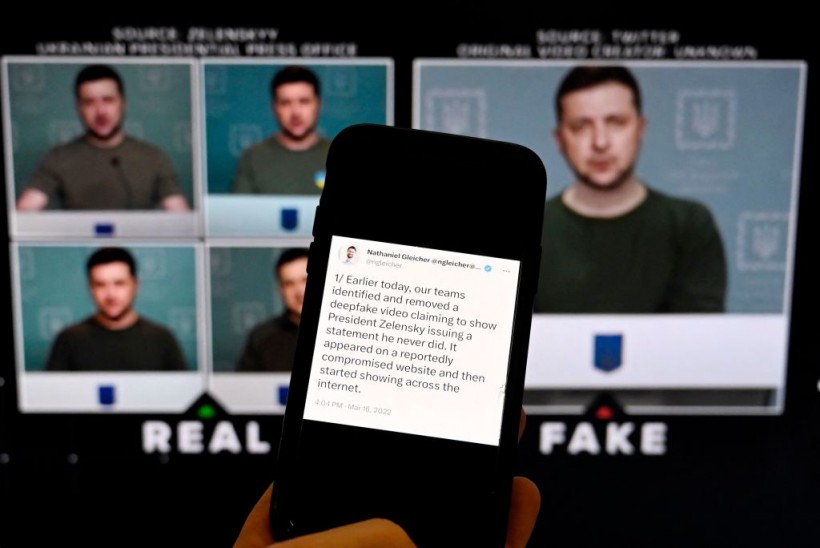Singapore is making a proactive effort to counter the increasing menace of deepfakes and misinformation, having set aside a $20 million initiative to develop advanced detection tools that are aimed at strengthening trust and safety in online interactions.
The initiative, called "Building an Inclusive and Safe Digital Society," was launched following the increasing risks in the digital space; these include cyber attacks, scams, and widespread harmful content, as reported by The Straits Times. The Minister for Communications and Information, Josephine Teo, emphasized the need for Singapore to quickly change its methodologies and learn new ways of dealing with scammers and emerging online risks.
Teo's announcement came during a parliamentary session on January 10, where she acknowledged the multifaceted challenges posed by the digital way of life. Of particular concern is the misuse of deepfakes for crafting persuasive narratives, underscoring the need for continuous efforts to address these risks. Despite previous legislative measures, including new laws, the government recognizes the necessity for further action.

(Photo : OLIVIER DOULIERY/AFP via Getty Images)This illustration photo taken on January 30, 2023 shows a phone screen displaying a statement from the head of security policy at META with a fake video (R) of Ukrainian President Volodymyr Zelensky calling on his soldiers to lay down their weapons shown in the background, in Washington, DC.
Singaporean Government Takes The Leading the Fight Against Online Threats
Singapore's initiative outlines 13 recommendations to enhance online transaction security, detect fakes and scams, and promote digital safety education across society. Key recommendations include the government spearheading information-sharing platforms to help the public detect scams effectively, reinforcing safeguards against malware by device manufacturers and digital platforms, and holding social media services accountable for harmful content and malicious advertisements.
Parliamentarians unanimously supported the motion, endorsing a comprehensive approach to tackle various aspects of the digital landscape, from combating the manipulation of public opinion through deepfakes to addressing online scams and supporting vulnerable groups navigating the digital space.
Dr. Tan Wu Meng of Jurong GRC emphasized the seriousness of deepfakes for democracies, proposing electronic watermarking to prove content authenticity and preserve the foundation for democratic discussions. He cited the recent malicious use of Prime Minister Lee Hsien Loong's likeness in scam videos promoting investment products as an example of the potential harm.
Read Also: SEC X Account Hack Raising Alarms: Elon Musk's Platform Faces Scrutiny
Deepfakes: A Growing Concern Amid Advancing Technology
The threat posed by deepfakes, videos, and images that are altered digitally is growing with technological improvements. Deepfakes were initially utilized to defame someone by publishing false information or with malicious intent, which could harass and intimidate others as well as instill confusion about vital facts, per Nevada Today.
Dr. Paromita Pain, an assistant professor of global media in the Reynolds School of Journalism, highlights the challenges of identifying fakes as technology becomes more sophisticated. Deepfake detection methods initially developed, like identifying lack of blinking in deepfake images, have been addressed by creators, making detection more challenging today. While advanced algorithms excel at rendering frontal face profiles, side profiles are harder to emulate. Despite the complexity, resources are emerging to aid individuals in detecting fakes while navigating online platforms, especially as the technology continues to evolve.
Renée DiResta, a disinformation expert at the Stanford Internet Observatory, highlighted that despite the convincing nature of deepfake technology, careful observers, including software engineers, governments, and journalists, can often discern authenticity.
While fully mature detection tools are still in development, DiResta outlined several strategies to help individuals and institutions guard against deep-fake threats. According to Reuters, these include maintaining skepticism toward media content, scrutinizing video and audio for unnatural elements, employing identity verification measures, using available deepfake detection tools, educating users about deepfake types, advocating for government regulations to address malicious use, adopting a zero-trust security model, and implementing basic cybersecurity practices.
Related Article: EU to Investigate Tech Giants' Deals with AI Makers, Eyes Microsoft-OpenAI Partnership










